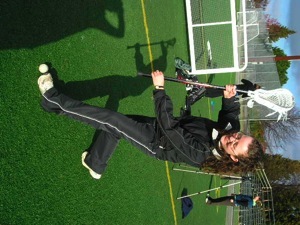






The following assessment tools are designed to assess student learning in each of the three learning domains: pyschomotor, cognitive, and affective/social. Assessment tools provided are intended to assess students’ achievement of the learning objectives for a particular lesson and the overall unit objectives.
There are three different types of assessment: assessment of learning (summative), assessment for learning (formative), and assessment as learning (Hopper, 2007). We suggest using a combination of summative and formative learning for this unit.
Summative assessment may take place at the end of a lesson and towards the end of the unit with a written assignment or quiz, and/or in the form of a formal skill assessment.
Formative assessment should be ongoing throughout the unit as a way for teachers to determine if students are able to achieve the lesson and unit objectives, and if their lessons and methods of teaching are appropriate for students’ level of ability.
Below we have provided links to sample assessment tools which can be used by teachers as well as students. One of the learning outcomes for this unit is for students to assess and provide feedback for one another in a respectful and helpful manner. Students should be taught how to use assessment tools beforehand to gain an understanding of what assessment means, and how to use the information they have recorded to provide useful feedback to their peers (Mitchell, Oslin, and Griffin, 2006).

Game Performance Assessment Instrument’s (GPAI) can be filled out by either students or teachers.
452 GPAI scale sheet.doc 452 GPAI tick and tally system.doc

Assessment tools which focus on cognitive learning outcomes evaluate students’ knowledge and understanding of solutions to tactical problems, such as defensive strategies to prevent scoring, and their understanding of how and when to execute specific skills and movements
within a game.
Question and Answer sessions during a lesson allow for formative assessment of cognitive
development
Ex. What are some ways a player can provide support for their teammate on the ball?
move into open space to provide a target for a pass, mark an opponent, use feinting and
quick changes in direction to force an opponent to move.
Check for understanding throughout an explanation and following an explanation/demonstration to
ensure that students know what to do
Ex. There are 5 cues to listen for in “Simon Says” that require students to perform a specific skill.
Who can tell me what two of those cues are? ex. grip, scoop
Everyone demonstrate for me what scoop looks like: everyone shows a scooping motion
Using the Sport Education model, design a group activity for students to solve a tactical problem
and have students present it in written/verbal form to the teacher and/or the rest of the class.

themselves.
Self-report allows students to assess their effort for each day by providing the teacher with a
verbal or written mark on a scale (ex. 1-5).
The teacher could also assess students effort on a similar scale through informal observation of the
class.
Using a Sport Education model also allows teachers to assess students in this domain because it requires students to work together and take on roles and responsibilities within their group and the class. Teacher’s could have students assess their contribution to these activities on a scale, or through a written reflection.
Assessing teaching instruction:
This can be done by the teacher themselves or by a colleague.
Self-assessment can be done through written and/or verbal reflection or by completing a time-on-task sheet for a lesson or series of lessons. Assessment of teaching can also be determined by assessing what students have actually learned compared to the objectives set out at the beginning of the lesson and unit.
Colleagues can also provide assessment of teaching by completing time-on-task sheets or through
written suggestions and feedback
452 organizational skills.doc 452 peer teaching assess.doc 452 time on task sheet.doc